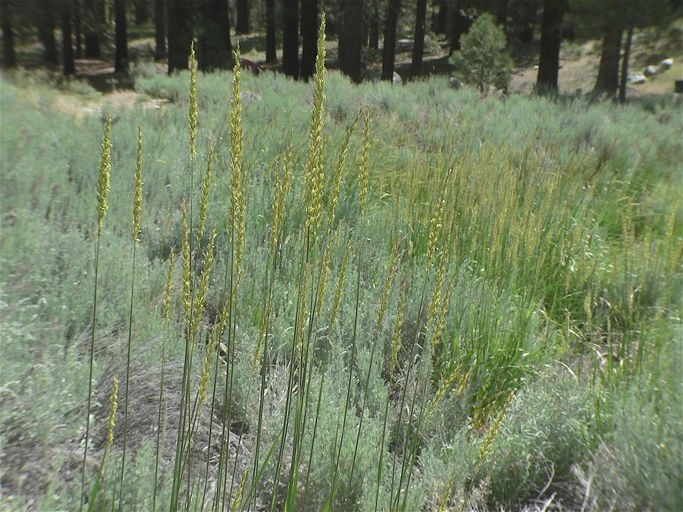Broad-Glumed Wheatgrass
(Elymus violaceus)
Broad-Glumed Wheatgrass (Elymus violaceus)
/
/

Jean Pawek
CC BY 3.0
Image By:
Jean Pawek
Recorded By:
Copyright:
CC BY 3.0
Copyright Notice:
Photo by: Jean Pawek | License Type: CC BY 3.0 | License URL: http://creativecommons.org/licenses/by/3.0/ | Attribution: 2012 Jean Pawek | Publisher: Calphotos |













































Estimated Native Range
Summary
Elymus violaceus, commonly known as Broad-Glumed Wheatgrass, is a deciduous perennial grass native to a range of habitats including prairies, open woodlands, and rocky slopes across North America. It typically grows to a height of 2 to 3 feet and is known for its blue-green foliage and violet-tinged flower spikes that appear in mid-summer. The plant’s ability to thrive in both dry and mesic conditions, as well as its tolerance to higher soil salinity, makes it a versatile species in restoration and reclamation projects.
Broad-Glumed Wheatgrass is valued for its adaptability and is used for soil stabilization, erosion control, and as a forage crop due to its palatability to livestock. Its saline tolerance is especially beneficial in areas with saline soils, where it can establish more readily than other grasses. It is also appreciated for its ornamental qualities in naturalistic plantings and meadow gardens. For optimal growth, it prefers full sun to part shade and requires medium amounts of water with well-drained soil. While it is generally low-maintenance, it can be susceptible to rust diseases under certain conditions.CC BY-SA 4.0
Broad-Glumed Wheatgrass is valued for its adaptability and is used for soil stabilization, erosion control, and as a forage crop due to its palatability to livestock. Its saline tolerance is especially beneficial in areas with saline soils, where it can establish more readily than other grasses. It is also appreciated for its ornamental qualities in naturalistic plantings and meadow gardens. For optimal growth, it prefers full sun to part shade and requires medium amounts of water with well-drained soil. While it is generally low-maintenance, it can be susceptible to rust diseases under certain conditions.CC BY-SA 4.0
Plant Description
- Plant Type: Grass
- Height: 2-3 feet
- Width: 0.5-1 feet
- Growth Rate: Rapid
- Flower Color: N/A
- Flowering Season: Spring
- Leaf Retention: Deciduous
Growth Requirements
- Sun: Full Sun, Part Shade
- Water: Medium
- Drainage: Medium
Common Uses
Bird Garden, Low Maintenance
Natural Habitat
native to a range of habitats including prairies, open woodlands, and rocky slopes across North America
Other Names
Common Names: Arctic Wheatgrass, Arctic Wildrye, Slender Wheatgrass, High Wildrye, Violet Wheatgrass, Élyme Latiglume, Élyme À Glumes Larges
Scientific Names: , Elymus trachycaulus, Elymus trachycaulus subsp. trachycaulus, Elymus trachycaulus var. trachycaulus, Elymus violaceus, Agropyron tenerum, Agropyron trachycaulum, Elymus trachycaulis, Agropyron pauciflorum, Elymus trachycaulus subsp. subsecundus
GBIF Accepted Name: Elymus violaceus (Hornem.) J.Feilberg